 2020 Sunil Weeramantry & Edward Eusebi Best Lessons of a Chess Coach: Extended Edition is a curriculum development project of
2020 Sunil Weeramantry & Edward Eusebi Best Lessons of a Chess Coach: Extended Edition is a curriculum development project of  171 East Post Road, Ste 206, White Plains NY 10601 (914) 683-5322 www.NSCFchess.org All rights reserved. No part of this book may be reproduced or transmitted in any form by any means, electronic or mechanical, including photocopying, recording, or by an information storage and retrieval system, without written permission from the Publisher. Publisher: Mongoose Press 1005 Boylston Street, Suite 324 Newton Highlands, MA 02461 www.MongoosePress.com ISBN: 978-1-936277-90-2 ISBN: 978-1-936277-91-9 (eBook) Distributed to the trade by National Book Network , 800-462-6420 For all other sales inquiries please contact the Publisher. Layout: Stanislav Makarov Editor: Robert McLellan Senior Editor: Jorge Amador Cover Design: Alexander Krivenda Printed in the United States of America From Sunil: To my family: Carolyn, Asuka, Hikaru, Joy & Violet, thanks for adding meaning to my life. From Edward: To Sylvia, Lenny, and Clara, the pillars of my being; to my granddaughters Evvy and Nora, the anchors of our future family chess team; and to their loving mother Jess. _____________ This new edition of Best Lessons was helped along by the financial support of many donors to the National Scholastic Chess Foundations curriculum development initiatives. _____________ This new edition of Best Lessons was helped along by the financial support of many donors to the National Scholastic Chess Foundations curriculum development initiatives.
171 East Post Road, Ste 206, White Plains NY 10601 (914) 683-5322 www.NSCFchess.org All rights reserved. No part of this book may be reproduced or transmitted in any form by any means, electronic or mechanical, including photocopying, recording, or by an information storage and retrieval system, without written permission from the Publisher. Publisher: Mongoose Press 1005 Boylston Street, Suite 324 Newton Highlands, MA 02461 www.MongoosePress.com ISBN: 978-1-936277-90-2 ISBN: 978-1-936277-91-9 (eBook) Distributed to the trade by National Book Network , 800-462-6420 For all other sales inquiries please contact the Publisher. Layout: Stanislav Makarov Editor: Robert McLellan Senior Editor: Jorge Amador Cover Design: Alexander Krivenda Printed in the United States of America From Sunil: To my family: Carolyn, Asuka, Hikaru, Joy & Violet, thanks for adding meaning to my life. From Edward: To Sylvia, Lenny, and Clara, the pillars of my being; to my granddaughters Evvy and Nora, the anchors of our future family chess team; and to their loving mother Jess. _____________ This new edition of Best Lessons was helped along by the financial support of many donors to the National Scholastic Chess Foundations curriculum development initiatives. _____________ This new edition of Best Lessons was helped along by the financial support of many donors to the National Scholastic Chess Foundations curriculum development initiatives.
Special thanks to our great friends Michael Ryan and Carol Jarecki. CONTENTSINTRODUCTION TO THIS EDITION P eople have been asking for a new printing of Best Lessons of a Chess Coach for over a decade. I first went to Sunil and Ed requesting they make just a few minor edits, but we were soon engaged in a major re-write, going back to Eds original transcriptions of Sunils classes at Hunter College Elementary School and the National Scholastic Chess Foundations Saturday chess program at the Girl Scout House in Scarsdale. For this edition, we wanted to be certain that the main theme of each lesson is clear and that we go off on fewer tangents. We also determined where additional or alternate diagrams would benefit the student. By making a slight change in lesson order, we now present a grandmaster game followed by one or more of Sunils games where he encountered similar positions and concepts.
And two additional games, originally planned for the 1993 book but left out due to page count restrictions, have been completed and are presented herein. Another change is in the presentation of the Illustrative Games. They now appear at the end of each thematic section, and include a number of modern grandmaster games. Each of these games is presented with a series of commented diagrams which follow the flow of the game and emphasize the themes. In addition, many of these games are supplemented with exercises. With the great wealth of chess now available on the Internet, something Sunil and Ed did not enjoy in the early 1990s, you can readily find these games and play them through, which we highly recommend.
This book is available on the Forward Chess app which also allows you to see all the moves of a game, not just the diagrammed positions. In his lessons, Sunil makes the point that there is validity in studying games in their entirety. Rather than simply solving puzzles, studying games exposes you to many different types of positions and helps you formulate an appropriate strategy to try in your own play. In the time I have been working with Sunil, I cannot count how often people have commented that Best Lessons of a Chess Coach is among their top two or three books because of how much they learned. So, without further ado, this new edition is for them, and for the many younger generations of chess players who would love to have a lesson from one of our nations most successful chess instructors. Turn the page, class is about to begin.
Robert McLellan Editor, Best Lessons of a Chess Coach: Extended EditionPREFACE O ne of the biggest stumbling blocks in the development of aspiring chess players comes sometime after they begin to play in tournaments. In the heat of competition, their minds are often plagued with questions they do not know how to answer: Who has the better position? Should I resolve the tension in the center? Can I improve the placement of my pieces? What is the best way to penetrate my opponents defenses? Such questions cannot be answered by mere reference to a laundry list of canned precepts. Every truth about chess must be couched in context preferably in the context of a real game. To play chess well, and to appreciate it the most, one can do no better than to study complete, well-annotated master games. This book presents a series of classroom lessons by nationally acclaimed chess coach Sunil Weeramantry, a FIDE master who is in current and continual practice. Sunils lectures bring the reader through the entire life cycle of a game, making clear what is happening at key moments.
The cumulative effect of studying these lectures is to give the improving player tools with which to win. We hope the reader will find a good amount of chess entertainment while seeing how the story of each of these games unfolds in the classroom. There is a great deal of beauty, logic, and artistry to admire and enjoy in the games and ideas presented. When Sunil lectures on the games of the great masters, one can imagine being there. When Sunil lectures on his own games, one can share the experience along with him the excitement, disappointments, and satisfaction of a well-played game. This book is organized into four thematic sections, each containing several lessons.
Each lesson presents one complete game that illustrates one or more themes. The lessons are dialogues in which Sunil frames questions for his students. You should pause to answer the questions yourself. Note that the first answer given in the text may not be the correct one. Sometimes these wrong answers provide the best opportunity for learning. Diagrams are provided to help you follow the game and visualize the possibilities, but it is also recommended that you play along on your own chess set.
You will also be given exercises within each lecture. You may wish to set up the position on a board, perform your own analysis, and make notes for comparison to the answers given at the end of the lesson. Review notes are provided to reinforce the important points made during each lecture. These notes are segmented into Themes and Advice. As you read these, try to recall the context in which the ideas were presented. If necessary, go back and find the relevant paragraphs.
At the end of each of the four thematic sections, you will find Illustrative Games. These games highlight the themes of the associated lessons. Play through these games to get a feel for how thematic positions develop in different situations. Such pattern reinforcement is important to the development of chess skill. If you should encounter chess terms you do not understand, please refer to the Glossary provided at the end of the book. PART A OUTPOST SQUARES T he games in this section demonstrate the establishment and exploitation of outpost squares.
OUTPOST SQUARES T he games in this section demonstrate the establishment and exploitation of outpost squares.
A piece posted on such a square exerts pressure on the opponents position and supports the attack.
Next page
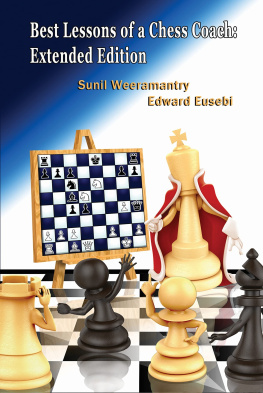

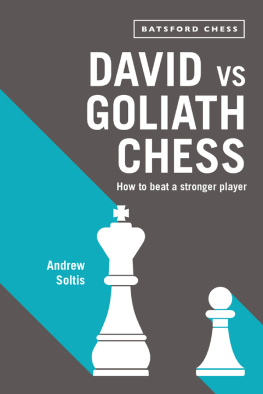
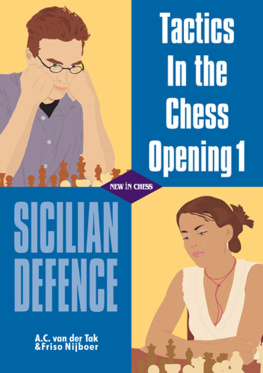
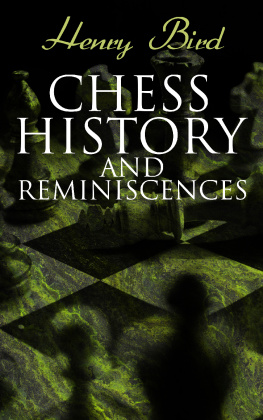
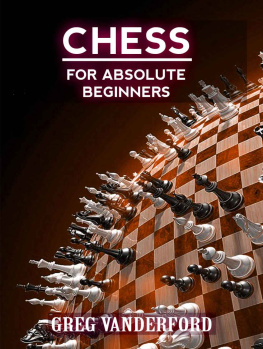
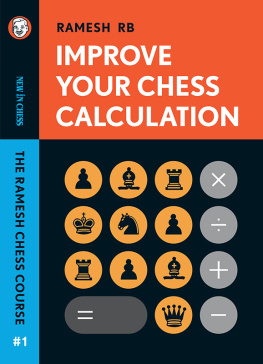
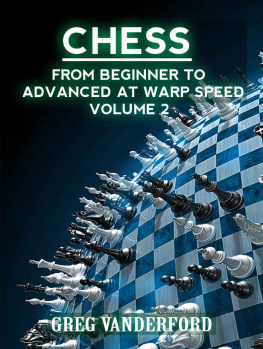
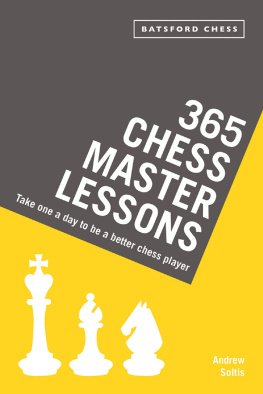
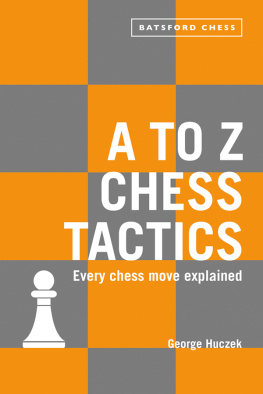
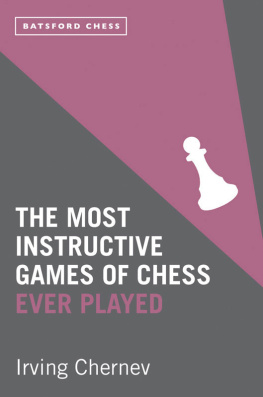

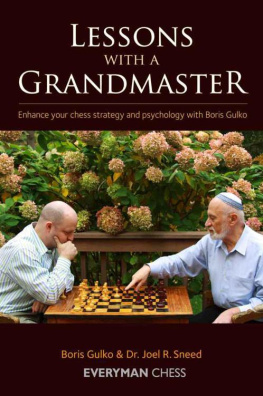
 2020 Sunil Weeramantry & Edward Eusebi Best Lessons of a Chess Coach: Extended Edition is a curriculum development project of
2020 Sunil Weeramantry & Edward Eusebi Best Lessons of a Chess Coach: Extended Edition is a curriculum development project of  171 East Post Road, Ste 206, White Plains NY 10601 (914) 683-5322 www.NSCFchess.org All rights reserved. No part of this book may be reproduced or transmitted in any form by any means, electronic or mechanical, including photocopying, recording, or by an information storage and retrieval system, without written permission from the Publisher. Publisher: Mongoose Press 1005 Boylston Street, Suite 324 Newton Highlands, MA 02461 www.MongoosePress.com ISBN: 978-1-936277-90-2 ISBN: 978-1-936277-91-9 (eBook) Distributed to the trade by National Book Network , 800-462-6420 For all other sales inquiries please contact the Publisher. Layout: Stanislav Makarov Editor: Robert McLellan Senior Editor: Jorge Amador Cover Design: Alexander Krivenda Printed in the United States of America From Sunil: To my family: Carolyn, Asuka, Hikaru, Joy & Violet, thanks for adding meaning to my life. From Edward: To Sylvia, Lenny, and Clara, the pillars of my being; to my granddaughters Evvy and Nora, the anchors of our future family chess team; and to their loving mother Jess. _____________ This new edition of Best Lessons was helped along by the financial support of many donors to the National Scholastic Chess Foundations curriculum development initiatives. _____________ This new edition of Best Lessons was helped along by the financial support of many donors to the National Scholastic Chess Foundations curriculum development initiatives.
171 East Post Road, Ste 206, White Plains NY 10601 (914) 683-5322 www.NSCFchess.org All rights reserved. No part of this book may be reproduced or transmitted in any form by any means, electronic or mechanical, including photocopying, recording, or by an information storage and retrieval system, without written permission from the Publisher. Publisher: Mongoose Press 1005 Boylston Street, Suite 324 Newton Highlands, MA 02461 www.MongoosePress.com ISBN: 978-1-936277-90-2 ISBN: 978-1-936277-91-9 (eBook) Distributed to the trade by National Book Network , 800-462-6420 For all other sales inquiries please contact the Publisher. Layout: Stanislav Makarov Editor: Robert McLellan Senior Editor: Jorge Amador Cover Design: Alexander Krivenda Printed in the United States of America From Sunil: To my family: Carolyn, Asuka, Hikaru, Joy & Violet, thanks for adding meaning to my life. From Edward: To Sylvia, Lenny, and Clara, the pillars of my being; to my granddaughters Evvy and Nora, the anchors of our future family chess team; and to their loving mother Jess. _____________ This new edition of Best Lessons was helped along by the financial support of many donors to the National Scholastic Chess Foundations curriculum development initiatives. _____________ This new edition of Best Lessons was helped along by the financial support of many donors to the National Scholastic Chess Foundations curriculum development initiatives. OUTPOST SQUARES T he games in this section demonstrate the establishment and exploitation of outpost squares.
OUTPOST SQUARES T he games in this section demonstrate the establishment and exploitation of outpost squares.